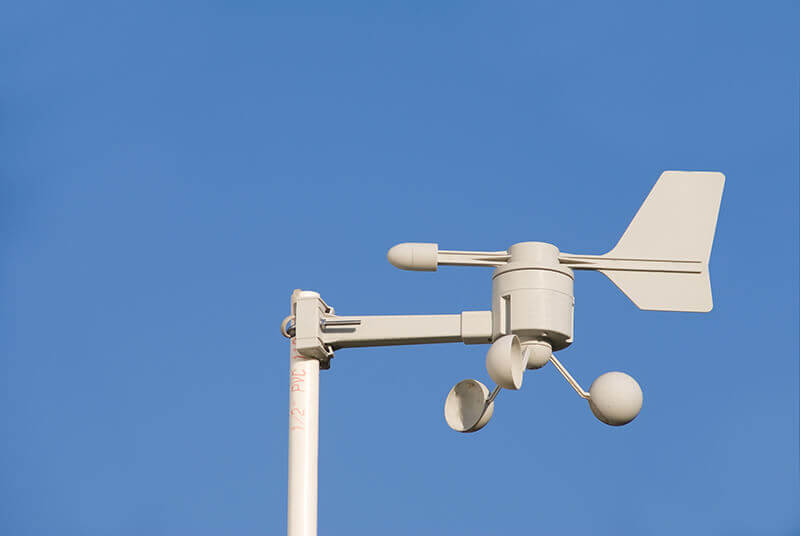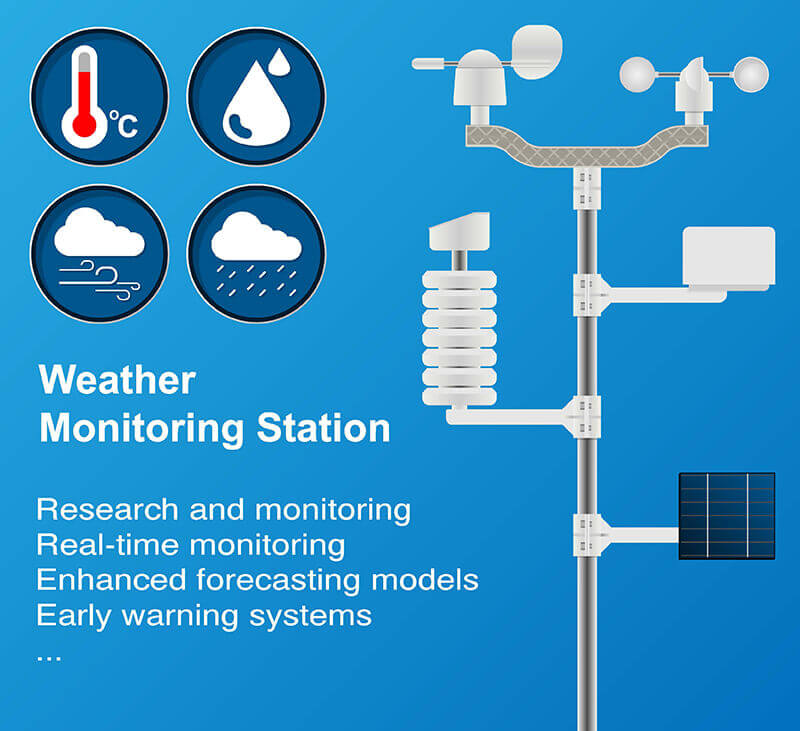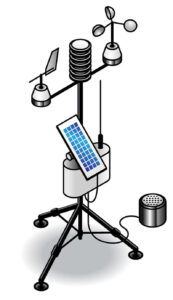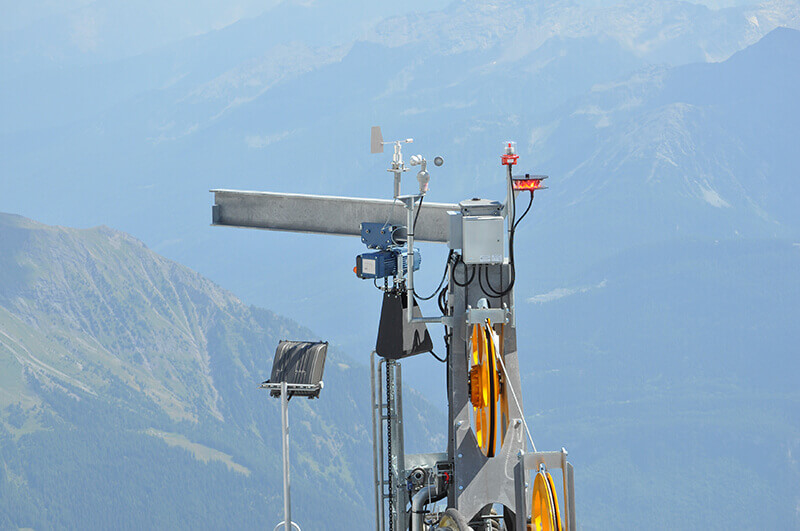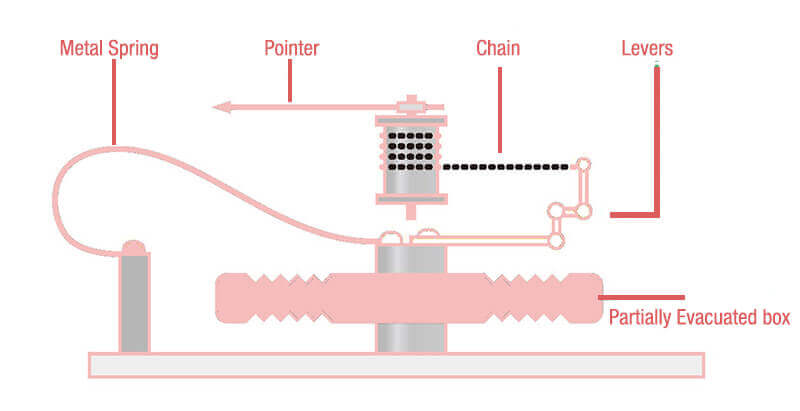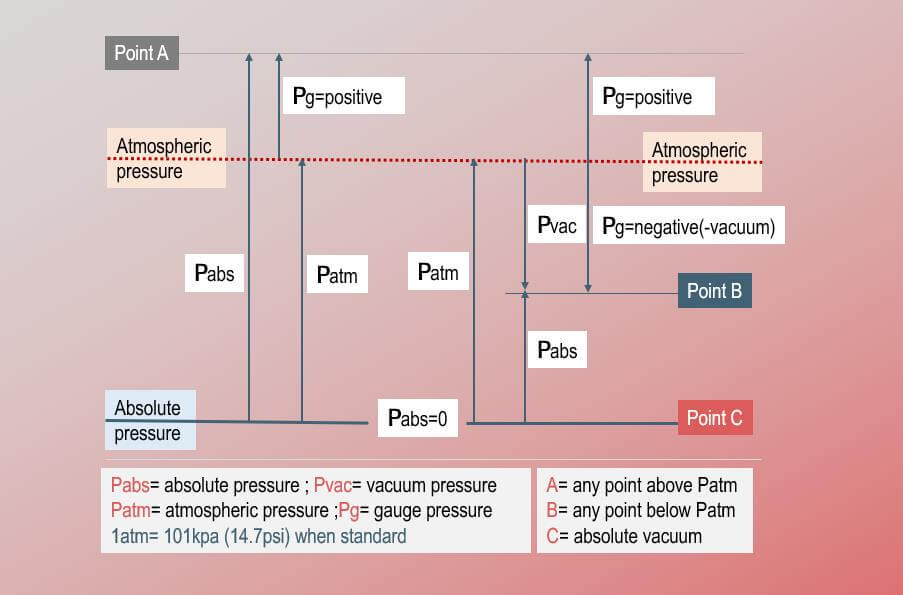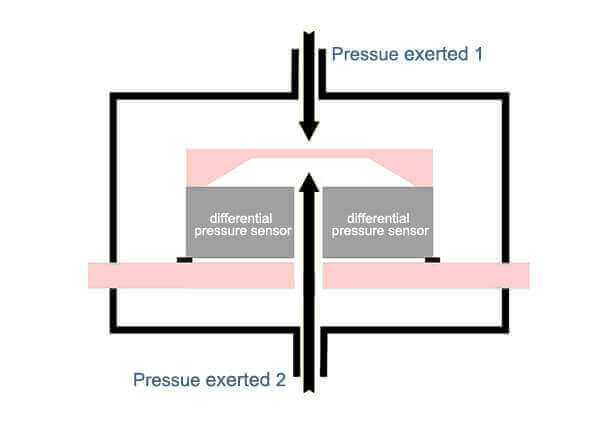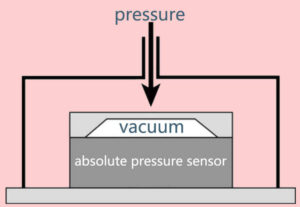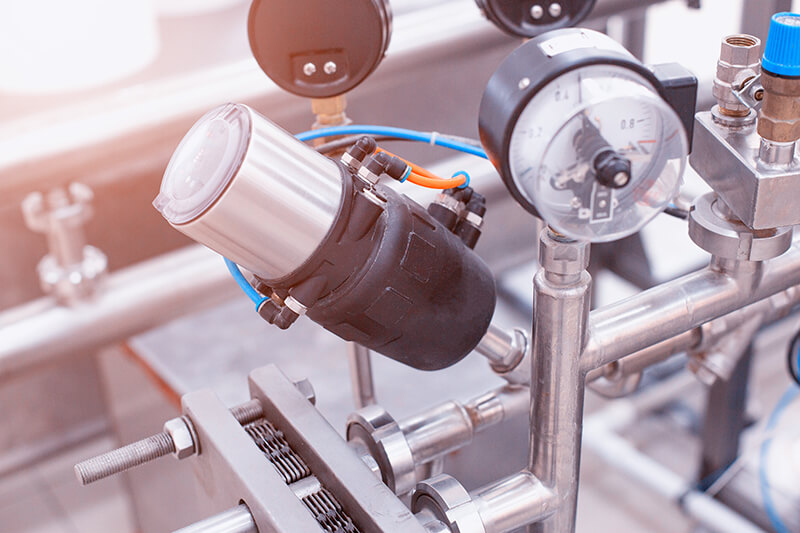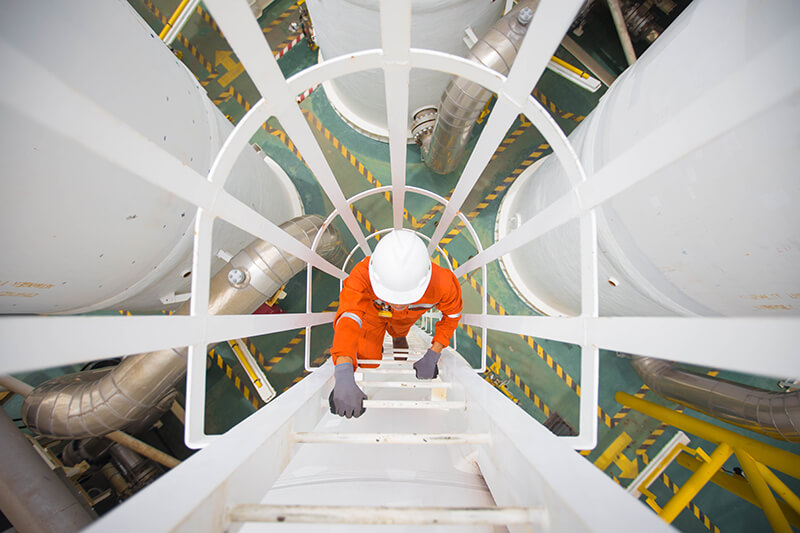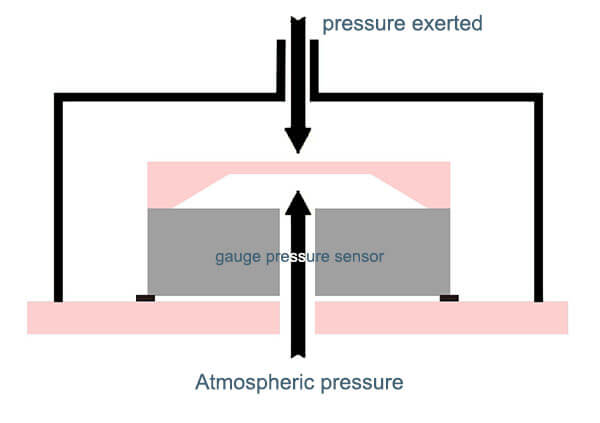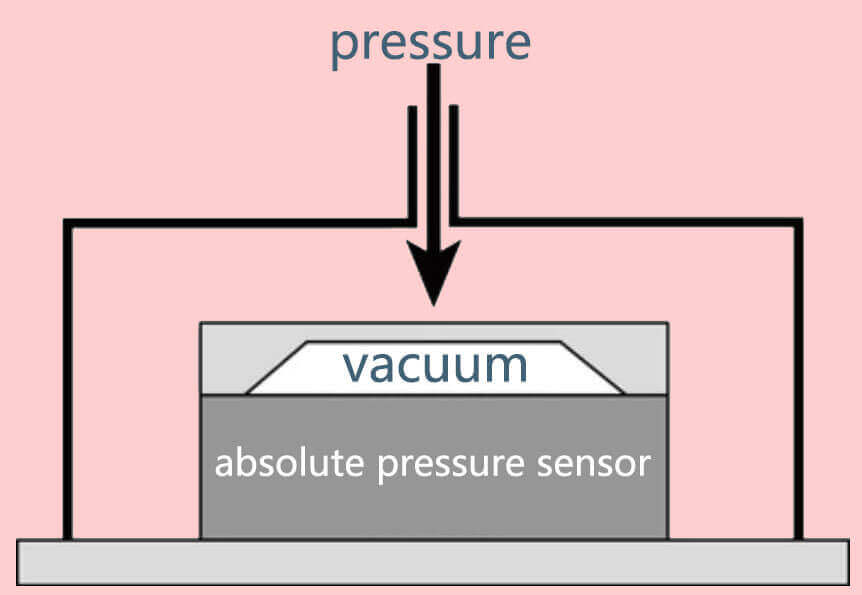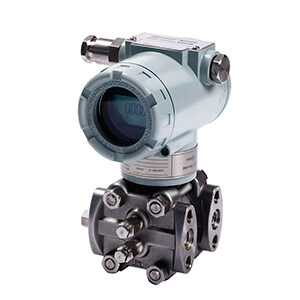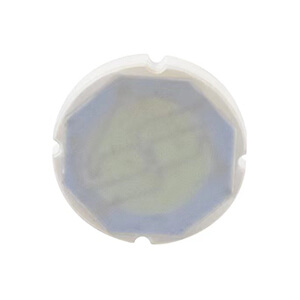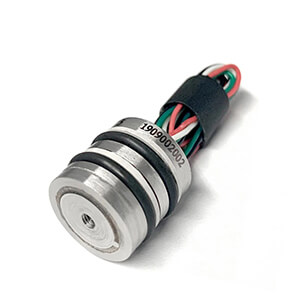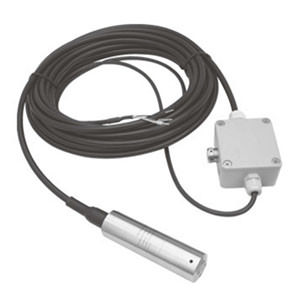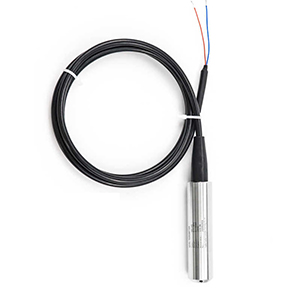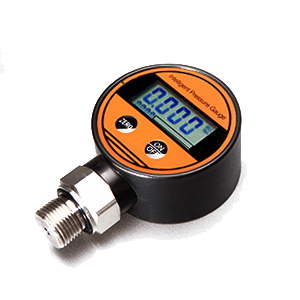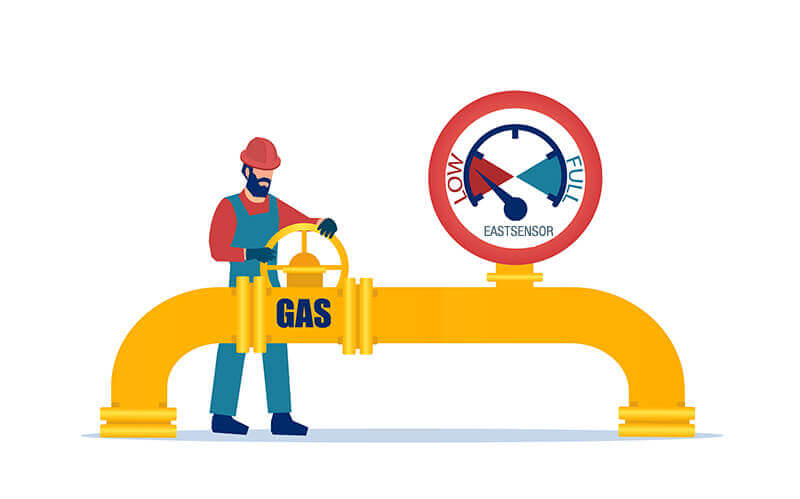
Gas pressure sensor
What is Gas pressure sensor?
A gas pressure sensor, in simple terms, is a device used to measure the pressure of a gas within a specific environment or system. These sensors play a crucial role in various industries, including automation building, where they help monitor and control different processes.
The sensor works by converting the pressure applied by the gas into an electrical signal, which can then be read, analyzed, and acted upon by a control system. There are various types of pressure sensors, such as piezoresistive, capacitive, and optical, each with its unique way of sensing pressure changes.
In the context of automation building, gas pressure sensors are often used to regulate air pressure in heating, ventilation, and air conditioning (HVAC) systems, monitor gas leaks, or control other gas-related processes for safety and energy efficiency.
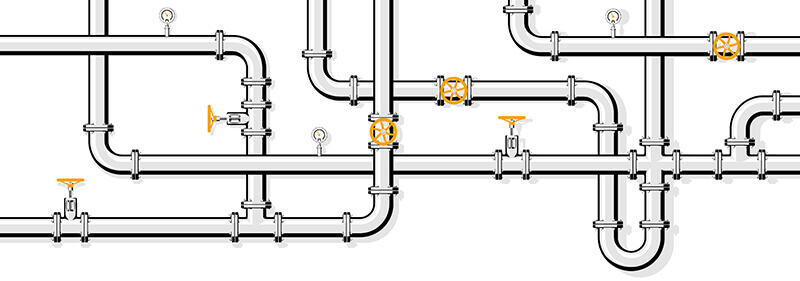
What are the difference with water pressure sensor?
- Pressure range:
Gas pressure sensors: Typically measure a wide range of pressures, from low (a few pascals) to high (tens of thousands of pascals), depending on the application. For example, an HVAC system might require a sensor with a range of 0 to 1000 Pa.
Water pressure sensors: Generally deal with higher pressures, often ranging from 0 to several hundred psi (pounds per square inch). A residential water system, for instance, may require a sensor with a range of 0 to 100 psi.
- Accuracy:
Gas pressure sensors: Accuracy can vary depending on the sensor type and application. For example, an accuracy of ±1% full-scale (FS) might be sufficient for general HVAC systems, while more demanding applications like laboratory or research settings might require an accuracy of ±0.1% FS.
Water pressure sensors: Similar to gas sensors, accuracy depends on the application. Residential water systems may require an accuracy of ±1% FS, while industrial or high-precision applications may need better accuracy, such as ±0.25% FS.
- Media compatibility:
Gas pressure sensors: These sensors are designed to be compatible with various gas types, including air, natural gas, or other non-corrosive gases. Materials used in the sensor, such as the diaphragm, should be resistant to the specific gas in your application.
Water pressure sensors: Specifically designed for compatibility with water or other liquids, these sensors typically use materials like stainless steel or ceramic that are resistant to corrosion and can withstand contact with water.
- Temperature range:
Gas pressure sensors: May have a wide operating temperature range, such as -40°C to +85°C, depending on the application and environment. In HVAC systems, a typical range might be 0°C to 50°C.
Water pressure sensors: Often have similar temperature ranges to gas sensors but are designed to handle the specific temperature variations associated with water systems, such as -40°C to +125°C.
- Output signal:
Gas pressure sensors: Common output signals include voltage (0-5V, 0-10V), current (4-20mA), or digital communication protocols (I2C, RS-485). The choice depends on your control or monitoring system requirements.
Water pressure sensors: Similar to gas sensors, output signals can include voltage, current, or digital communication protocols. The choice depends on the system in which the sensor will be integrated.
- Size and form factor:
Gas pressure sensors: Can vary in size and shape, from compact board-mounted sensors to larger, ruggedized units with threaded connections for industrial applications. The form factor depends on the specific requirements of your system and the available space for installation.
Water pressure sensors: Often have a more robust and sealed design to withstand direct contact with water. Depending on the application, they may come in various sizes and shapes, including threaded or flanged connections.
- Durability and reliability:
Gas pressure sensors: Should be chosen based on their ability to withstand the environmental conditions of your application, including potential exposure to dust, humidity, or corrosive gases. Long-term stability and resistance to shock and vibration are also essential considerations.
Water pressure sensors: Must be designed to resist corrosion, ingress of water, and potential contamination. They should also demonstrate long-term stability and resistance to shock and vibration.
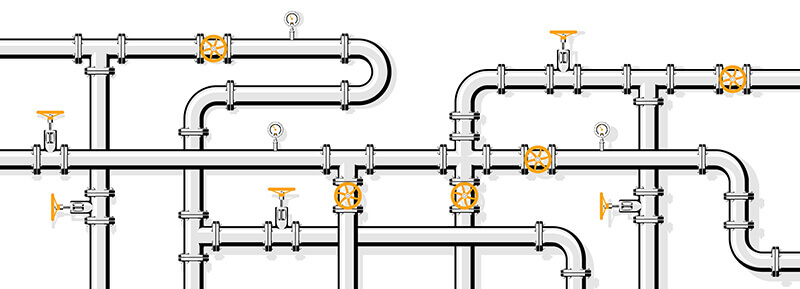
What are the applications for Gas pressure sensor?
Gas pressure sensors can be used in a wide variety of industries for various applications. While it’s challenging to provide exact data and numbers due to the diverse nature of these industries, here’s an overview of some common sectors that utilize gas pressure sensors:
Oil and Gas Industry:
Gas pressure sensors are used for monitoring pressure levels in pipelines, gas storage tanks, and wellheads. They help ensure safe operation and prevent leaks or catastrophic failures.
- Pressure range: 0 – 20,000 psi (or higher for deep-sea applications)
- Technical requirements: High accuracy, high-temperature capability, explosion-proof enclosures (ATEX/IECEx)
- Benefits: Ensuring safe operation, preventing leaks or catastrophic failures, maintaining process efficiency, and reducing environmental impact.
- Safety considerations: Monitoring for overpressure, corrosion-resistant materials, explosion-proof enclosures, and regular maintenance.
Chemical and Petrochemical Industry:
Pressure sensors play a crucial role in monitoring and controlling chemical processes, including pressure levels in reactors, distillation columns, and storage tanks.
- Benefits: Process optimization, safety improvements, reduced downtime, and early detection of potential issues.
- Safety considerations: Corrosion resistance, chemical compatibility, protection from hazardous environments, and regular inspections.
- Pressure range: Vacuum to 5,000 psi (varies with processes)
- Technical requirements: Chemical-resistant materials (e.g., Hastelloy, Tantalum), high accuracy, high-temperature capability
HVAC and Refrigeration:
In heating, ventilation, and air conditioning systems, gas pressure sensors are used to monitor and control pressure levels in compressors, refrigerant lines, and gas furnaces.
- Benefits: Energy efficiency, system reliability, improved comfort, and reduced environmental impact.
- Safety considerations: Proper sensor placement, protection from dust and moisture, regular calibration, and maintenance.
- Pressure range: Vacuum to 600 psi (varies with refrigerants)
- Technical requirements: Media compatibility (e.g., refrigerants), robust design, temperature compensation
Power Generation:
Gas pressure sensors are used in power plants to monitor combustion processes and ensure proper functioning of gas turbines, boilers, and other critical components.
- Benefits: Improved efficiency, reduced emissions, better safety, and lower operational costs.
- Safety considerations: Protection from high temperatures, corrosion resistance, proper sensor installation, and regular inspections.
- Pressure range: 0 – 3,000 psi (varies with turbine or boiler types)
- Technical requirements: High-temperature capability, long-term stability, vibration resistance
Automotive Industry:
Pressure sensors are essential in monitoring and controlling various aspects of vehicle performance, including engine management, fuel systems, and exhaust gas recirculation systems.
- Benefits: Enhanced vehicle performance, fuel efficiency, reduced emissions, and improved safety.
- Safety considerations: Vibration resistance, temperature stability, protection from contaminants, and regular maintenance.
- Pressure range: 0 – 300 psi (engine oil pressure) to 2,000 psi (fuel rail pressure)
- Technical requirements: Compact size, temperature and vibration resistance, media compatibility (e.g., fuel, oil)
Aerospace Industry:
Gas pressure sensors are used in aircraft and spacecraft for monitoring fuel and hydraulic systems, cabin pressurization, and altitude measurements.
- Benefits: Enhanced safety, improved fuel efficiency, better system performance, and lower operational costs.
- Safety considerations: High-reliability sensors, temperature stability, vibration resistance, and regular inspections.
- Pressure range: 0 – 5,000 psi (hydraulic systems) to 0 – 20,000 ft (altitude measurements)
- Technical requirements: Lightweight, high-reliability, temperature and vibration resistance, wide pressure ranges
Medical Industry:
Pressure sensors are utilized in various medical devices and equipment, such as respiratory therapy devices, ventilators, and anesthesia machines, to monitor and control gas pressure levels.
- Benefits: Improved patient safety, enhanced device performance, better treatment outcomes, and reduced costs.
- Safety considerations: Biocompatibility, sterilization resistance, accurate measurements, and regular calibration.
- Pressure range: -10 to 300 cmH2O (respiratory devices) to 0 – 500 psi (oxygen regulators)
- Technical requirements: Biocompatible materials, sterilization resistance, high accuracy, low hysteresis
Environmental Monitoring:
Gas pressure sensors can monitor air quality, measure atmospheric pressure, and detect gas leaks in pipelines or storage facilities.
- Benefits: Early detection of potential hazards, better air quality, and improved public health.
- Safety considerations: Protection from harsh environments, proper sensor placement, and regular calibration.
- Pressure range: 0 – 1,000 psi (pipeline pressure) to 10 – 1,100 mbar (barometric pressure)
- Technical requirements: Long-term stability, low power consumption, protection from harsh environments
Semiconductor Manufacturing:
In the semiconductor industry, pressure sensors are used for monitoring and controlling gas delivery systems, vacuum systems, and process chambers.
- Benefits: Improved process control, reduced waste, enhanced product quality, and lower costs.
- Safety considerations: Cleanroom compatibility, protection from corrosive gases, and regular maintenance.
- Pressure range: Vacuum to 100 psi (gas delivery systems) to 0 – 10,000 psi (high-pressure processes)
- Technical requirements: Cleanroom compatibility, corrosion-resistant materials, high accuracy, low drift
Food and Beverage Industry:
Gas pressure sensors are employed in processes such as carbonation of beverages, modified atmosphere packaging, and monitoring pressure levels in storage tanks.
- Benefits: Enhanced product quality, reduced spoilage, improved safety, and lower costs.
- Safety considerations: Food-grade materials, protection from contaminants, accurate measurements, and regular calibration.
- Pressure range: 0 – 100 psi (carbonation) to 0 – 300 psi (process control)
- Technical requirements: Food-grade materials, washdown capability, media compatibility (e.g., CO2, N2)
Data in the table
| Industry | Pressure Range | Accuracy | Power Supply | Output Signal | Process Connection | Ingress Protection | Working Temperature |
|---|---|---|---|---|---|---|---|
| Oil and Gas | 0-20,000 psi | ±0.1-1% | 10-30 VDC | 4-20 mA | 1/4" NPT, 1/2" NPT | IP67, IP68 | -40°C to 125°C |
| Chemical/Petrochemical | Vacuum-5,000 psi | ±0.1-0.5% | 10-30 VDC | 4-20 mA | 1/4" NPT, 1/2" NPT | IP65, IP67 | -40°C to 125°C |
| HVAC/Refrigeration | Vacuum-600 psi | ±1-2% | 10-30 VDC | 4-20 mA | 1/4" SAE, 1/4" NPT | IP65, IP67 | -40°C to 85°C |
| Power Generation | 0-3,000 psi | ±0.25-1% | 10-30 VDC | 4-20 mA | 1/4" NPT, 1/2" NPT | IP65, IP67 | -40°C to 125°C |
| Automotive | 0-2,000 psi | ±0.5-2% | 5 VDC | 0.5-4.5 V | 1/8" NPT, 1/4" NPT | IP67, IP69K | -40°C to 125°C |
| Aerospace | 0-20,000 ft | ±0.25-1% | 10-30 VDC | 4-20 mA | 1/8" NPT, 1/4" NPT | IP65, IP67 | -55°C to 125°C |
| Medical | -10 to 500 psi | ±0.1-1% | 5-15 VDC | 0.5-4.5 V | 1/8" NPT, Luer Lock | IP65, IP67 | -20°C to 85°C |
| Environmental Monitoring | 10-1,100 mbar | ±0.1-1% | 10-30 VDC | 4-20 mA | 1/4" NPT, 1/2" NPT | IP65, IP67 | -40°C to 85°C |
| Semiconductor Manufacturing | Vacuum-10,000 psi | ±0.1-0.5% | 10-30 VDC | 4-20 mA | 1/4" VCR, 1/2" VCR | IP65, IP67 | -40°C to 125°C |
| Food and Beverage | 0-300 psi | ±0.5-1% | 10-30 VDC | 4-20 mA | Tri-Cl |
What technology is for Gas pressure sensor
There isn’t a single “best” technology for gas pressure sensors, as the most suitable choice depends on the specific application and requirements. However, we’ve outlined some of the most common technologies and their advantages to help you make an informed decision. Click to check more details.
Piezoresistive gas pressure sensor:
These sensors use a diaphragm with strain gauges that change their electrical resistance when subjected to pressure. They are widely used and offer a good balance of cost, accuracy, and performance.
Advantages: Good accuracy, suitable for a wide range of pressure measurements, relatively low cost, and robust.
Capacitive gas pressure sensor:
Capacitive sensors measure pressure by detecting changes in capacitance between two parallel plates, with one or both being flexible diaphragms. The capacitance changes as the diaphragm deflects under pressure.
Advantages: High sensitivity, low power consumption, good for low-pressure measurements, and excellent long-term stability.
Optical gas pressure sensor:
These sensors use optical techniques, such as interferometry or fiber Bragg gratings, to measure pressure. Changes in pressure cause a shift in the optical properties, which can be detected and quantified.
Advantages: Immune to electromagnetic interference, high sensitivity, and suitable for harsh environments, including high temperatures or chemically aggressive media.
Resonant gas pressure sensor:
Resonant sensors rely on the change in the resonant frequency of a vibrating element (e.g., a diaphragm or beam) when pressure is applied. The frequency shift is proportional to the applied pressure.
Advantages: High accuracy, excellent long-term stability, and good temperature compensation.
Piezoelectric gas pressure sensor:
These sensors generate an electrical charge when pressure is applied to a piezoelectric material, such as quartz or certain ceramics. The generated charge is proportional to the pressure.
Advantages: Suitable for dynamic pressure measurements, fast response times, and can withstand high-pressure levels.
Each technology has its strengths and weaknesses, so the most appropriate choice depends on factors like pressure range, accuracy requirements, environmental conditions, and budget constraints. It’s essential to consider these factors and the specific requirements of your application when selecting the most suitable gas pressure sensor technology.

Top-3 head-up for gas pressure sensor
Accuracy and Stability:
Ensuring that the pressure sensor provides accurate and stable readings is crucial for reliable and safe operation in various applications.
- Industry Case: In the oil and gas industry, monitoring pipeline pressures with high accuracy (±0.1-1%) is essential to prevent leaks, maintain process efficiency, and ensure safety.
- Data: Consider sensors with accuracy levels of ±0.1% to ±0.5% of full scale for applications requiring high accuracy.
Compatibility and Durability:
The pressure sensor should be compatible with the gas being measured and capable of withstanding the working conditions, including temperature, pressure, and potential corrosive or abrasive environments.
- Industry Case: In the chemical industry, sensors with corrosion-resistant materials (e.g., Hastelloy or Tantalum) are crucial for accurate measurements and long-lasting performance.
- Data: For high-temperature applications, select sensors that can operate within a temperature range of -40°C to 125°C or higher, depending on the specific requirements.
Safety and Certification:
Pressure sensors used in hazardous or extreme environments should have proper safety certifications (e.g., ATEX, IECEx) and protection ratings (e.g., IP67, IP68) to ensure reliable operation and minimize risks.
- Industry Case: In the aerospace industry, sensors should have high reliability, temperature and vibration resistance, and meet industry-specific certifications and standards (e.g., DO-160, MIL-STD).
- Data: For applications in hazardous environments, choose sensors with explosion-proof certifications, such as ATEX or IECEx, and ingress protection ratings of IP67 or higher.
Wrap up
In our discussion, we covered the basics of gas pressure sensors, including their working principles, key factors to consider when choosing a sensor, and various applications where they are used. We also discussed the differences between gas and water pressure sensors, common issues to watch out for when deploying gas pressure sensors, and the various technologies available for gas pressure sensing.
The most suitable gas pressure sensor technology depends on the specific application and requirements, including factors like pressure range, accuracy, media compatibility, temperature range, output signal, size, durability, and cost. Some common gas pressure sensor technologies include piezoresistive, capacitive, optical, resonant, and piezoelectric sensors, each with its own strengths and weaknesses.
Gas pressure sensors have certain limitations and risks, such as limited pressure range, sensitivity to temperature, media compatibility, mechanical stress, accuracy drift, electromagnetic interference, installation errors, and failure risk. Understanding these factors and taking appropriate measures, like proper sensor selection, installation, and maintenance, can help ensure optimal performance and reliability in your application.

